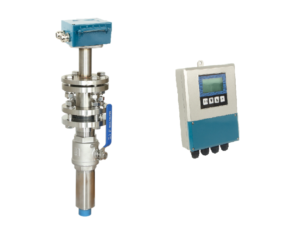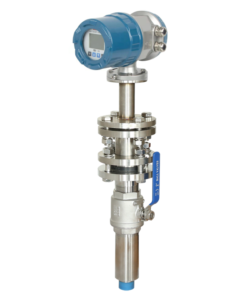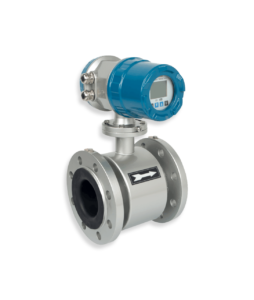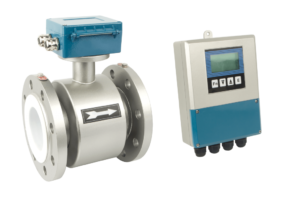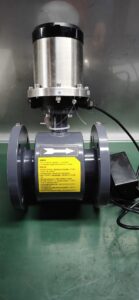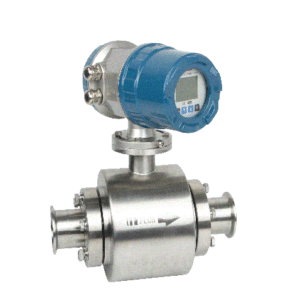The corrosion resistance of the electrode is an important factor in the selection of materials, but sometimes the electrode material has good corrosion resistance to the measured medium, but it is not necessarily the applicable material, and the surface effect of the electrode should be avoided.
The electrode surface effect is divided into three aspects: surface chemical reaction, electrochemistry and polarization phenomenon, and the catalytic effect of the electrode.
(1) Chemical reaction effects; for example, after the electrode surface is in contact with the measured medium, a passivation film or oxide layer is formed. They may play a positive role in protecting corrosion resistance, but may also increase surface contact resistance. For example, tantalum will be oxidized in contact with water, forming an insulating layer.
(2) Electrochemistry and polarization phenomena Electrochemical potential changes and polarization phenomena will produce interference potential and form noise. Slurry noise and flow noise are the performance of electrode surface noise. Polarization potential is that the electromotive force induced by the electrode has different polarities between the two electrodes, which causes the electrolyte to be polarized on the electrode surface. Low-frequency rectangular wave excitation combines the advantages of DC excitation and AC excitation. Although alternating excitation reduces the polarization potential by several orders of magnitude, it cannot completely eliminate the influence of polarization potential interference. The polarization potential is related to the properties of the liquid medium and the properties of the electrode material.
Slurry noise is when solid particles (or bubbles in the liquid) rub across the surface of the electrode when measuring the flow of liquid-solid two-phase conductive liquids such as mineral pulp fibers, and the electrochemical potential of the electrode surface changes suddenly. Spike noise appears in the output stream signal.
The flow noise is when the liquid flow rate of lower conductivity (around 100x 10^6S/cm and below) is measured, the electrochemical potential of the electrode changes regularly, which generates random noise with increasing frequency with the increase of flow rate, which causes the output of the instrument to fluctuate.
For the surface noise of the electrode, a material that has little effect on the electrochemical and polarization potential of the measured liquid and a low-noise electrode can be selected.
(3) Catalytic effect: The measured medium produces a chemical reaction under the catalytic action of the electrode, which affects the measurement. For example, a platinum electrode electromagnetic flowmeter will generate aerosol on the electrode surface when measuring hydrogen peroxide, and the output will fluctuate when the flow rate is zero.
For the matching of dielectric-electrode material to avoid or reduce the surface effect of the electrode, there is no sufficient data to check corrosiveness. There is only some limited experience, which has yet to be accumulated in practice.
Tantalum is corrosion-resistant to water, but if a tantalum electrode electromagnetic flowmeter is used to measure the water flow, an insulating layer will be formed on the surface of the tantalum electrode, which will cause the meter to malfunction or cause a lot of noise after a short period of operation. Tantalum electrodes cannot be used for lye such as sodium hydroxide. Even if the tantalum electrodes are in contact with water or “non-acid” liquids (such as cleaning the pipe system) for a very short time in the process, it will affect the normal use of the instrument.
Platinum-iridium alloy electrodes or platinum electrodes have good corrosion resistance to hydrochloric acid, and platinum electrode electromagnetic flowmeters are used to measure hydrochloric acid in many places to obtain satisfactory results. However, measuring a high concentration of hydrochloric acid (above 10%) produces serious noise. The platinum electrode is used to measure low-pressure hydrogen peroxide (pressure less than 0.3MPa) because the catalyst action surface generates aerosol on the electrode surface, which blocks the electrical path and affects the work.
Hastelloy B has corrosion resistance to hydrochloric acid with low temperature and low concentration. There have been several good examples of applications. However, the noise will be generated when the concentration exceeds a certain value. The test of changing the concentration of hydrochloric acid in the field shows that when the concentration gradually increases more than 15% to 20%, the output of the meter will shake, and the output will shake up to 20% when the concentration reaches 25%. Acid liquids such as nitric acid and sulfuric acid also have practical experience with similar effects.
The aluminum sulfate liquid is mixed with raw water in the water plant to condense the suspension. The mixing ratio is usually used to measure the aluminum sulfate liquid with an electromagnetic flowmeter. Satisfactory results can be obtained by selecting acid-resistant steel electrodes. In practice, I have encountered a Hastelloy B-electrode electromagnetic flowmeter measuring 15% aluminum sulfate, and the output sloshing phenomenon occurred during use, and then it worked normally when it was switched to an acid-resistant steel electrode.
Platinum and tantalum electrodes have good measurement results for various concentrations of sulfuric acid, nitric acid, hydrochloric acid, and hydrofluoric acid. Most of them have good measurement results. However, the platinum electrode will produce noise for hydrochloric acid with a concentration greater than 10%, and the tantalum electrode pair has a concentration greater than 10%. The hydrofluoric rubber is not resistant to corrosion.
Although platinum-iridium alloy and tantalum have good corrosion resistance, they are expensive, platinum-iridium electrodes are more than twice as expensive as tantalum electrodes.
Grounding rings are generally installed at both ends of the flow sensor connected to plastic pipes or metal pipes lined with insulating lining. Their corrosion resistance is also required to be lower than that of electrodes, and certain corrosion is allowed, and they should be replaced regularly. Acid-resistant steel or Hastelloy is usually used. Due to its large size, precious metals such as platinum are less used in economic considerations. If the metal process pipe is in direct contact with the fluid, no grounding ring is needed.

